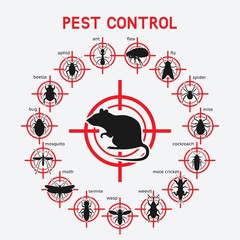Search engines use complex information sorters called web crawlers to scan hundreds of billions of pages. They then determine whether the content is relevant to a query based on various criteria, including keywords and page structure.
Tools like Semrush can help marketers develop keyword strategies and measure search engine rankings. However, achieving SEO goals takes more than just tracking the right metrics. Contact Rank Boss now!

Keywords are the cornerstone of any successful SEO campaign. They help you understand what your audience is searching for and help search engines match your content to user queries. Getting the right keywords can make all the difference in your traffic numbers, but more importantly, it can bring in the right kind of visitors.
Choosing the right keywords can be overwhelming, and it’s important to consider your audience when researching and selecting them. You can use various tools to help you find the most relevant keywords, and it’s also important to know which ones have too much competition. Then, you can focus on those that will impact your business most.
For instance, if you’re targeting the head term “blogging,” it may be difficult to rank against large companies already optimized for this keyword. You might have a better chance of ranking for “how to start a blog” or “blogging tips.” It’s also important to remember that search engines are looking for keywords that closely match the searcher’s intent.
You can incorporate keywords into existing content or create new content with them in mind. It’s also important to consider the type of content people are searching for and the geographic locations they’re searching from.
Once you have a list of the keywords you want to target, it’s time to start creating content. It’s important to remember that you can’t just put the keywords in your title tag and meta description, as search engines will ignore them. You need to add them to the content of your site as naturally as possible while ensuring that the keywords are highly relevant to the topic. For example, if you’re targeting the keyword “clothing,” you might include it in a headline, subheading, or paragraph. You can also add it to your alt text for images and the URL slug, which are all great ways to optimize your content for search engines.
On-page optimization
If you want your business to be found on search engines, you need to optimize its content. While off-page SEO is also important, on-page optimization is more within your control. It involves optimizing elements of your website that are visible to search engines, such as page URLs, content, and mobile-friendliness. It is also about making sure your content answers users’ search intent, so that Google will consider your site a relevant resource and rank it accordingly.
A good on-page SEO strategy starts with keyword research. This will help you discover what your potential customers are searching for and how best to target those keywords. You should also create high-quality content that is relevant to those searches. This is a long-term investment that will help you build your brand, drive traffic, and ultimately increase sales.
On-page optimization also includes meta tags and internal linking. Both are crucial for on-page SEO because they tell search engines what your page is about and how it relates to other pages on your website. Your meta titles and descriptions are also a key factor in your SERP rankings. The title tag and meta description should closely match your search terms, as this will influence what people click on when they see your results in the SERPs.
Another on-page SEO strategy is to use internal links to help search engines crawl your site more efficiently. This will help your pages rank higher in the SERPs. It is also a great way to boost user experience by helping visitors find what they are looking for. However, it is important to use internal links only to relevant pages. Avoid using them to link to pages that are not related to your topic, as this can lead to penalization by search engines.
A site’s architecture is an important aspect of on-page optimization, too. This involves ensuring that the navigation structure is logical and easy for bots to follow. This can be done by reducing the number of levels in the website hierarchy and adding relevant subpages. It is also important to make sure that your site doesn’t have duplicate content, which can be difficult for bots to index properly. You can do this by using a sitemap, using canonical tags, and assigning pages with a noindex tag.
Link building
In SEO, link building is the process of getting other websites to link to yours. This is one of the most important parts of seo because it helps search engines find your website and rank it higher in search results. It also helps your website attract visitors and leads. There are several different methods for link building, and each has its own advantages and disadvantages. However, the most effective technique is to create valuable content that people want to share.
Google considers the number and quality of inbound links to a page when ranking it. This is because inbound links are a signal that the page is relevant to the topic. A page with many inbound links is considered to be an expert resource on a particular topic and is likely to rank well in search results.
There are several ways to build links, some of which are more effective than others. These techniques include submitting your site to directories, creating social media accounts, and using guest posting services. You can also use a tool like Moz’s Link Explorer to get the most up-to-date link information.
Some of these techniques are considered to be low-quality and can even be considered spam. They are usually easy to implement, but they have little to no value in the eyes of Google. Examples of these tactics include adding links to forums, communities, and Q&A sites.
While some people think that link building is dead, it is still a crucial part of any seo strategy. A good strategy will involve a mix of tactics, including content marketing, PR, and social media. It should also focus on quality over quantity, and try to build links that are both relevant and natural.
A good way to start is by looking at your competitors. Find out what they’re doing that you’re not and then figure out how to do it better. Ultimately, though, there is no substitute for great content. It is what makes your website valuable and worth linking to. That’s why you need to spend time and effort making sure that your content is as good as possible.
Content creation
Content creation is a key element of SEO. It involves creating various forms of media, such as blogs, articles, or videos, to convey your ideas and information to a specific audience. It also helps you rank higher on search engine results pages (SERPs) and attract more visitors to your website. It is an essential part of any marketing strategy and can be used to achieve long-term success for your business.
In order to create high-quality content, it is necessary to understand your audience and what their needs are. This will help you craft content that is relevant to your customers and encourages them to return to your site again and again. You should also be aware of your competitors and what types of content they are publishing. This will allow you to make sure that your content is unique and provides more value than what your competitors are offering.
Using the right keywords is also important for SEO. You can do this by conducting keyword research, which will help you find a wide range of terms that people are searching for. You should also try to focus on long-tail keywords, as these tend to be more specific and will attract more traffic to your website. Moreover, you should avoid padding your content with words to reach a certain word count. This will not be beneficial for your website and will actually penalize it in the long run.
A great SEO content writer will have a variety of skills to help you optimize your content. This includes the ability to conduct keyword research, implement on-page optimization techniques, and build authority through collaboration with industry experts. They will also be familiar with the E-E-A-T framework, which emphasizes demonstrating experience, expertise, authoritativeness and trustworthiness.
SEO content creators are responsible for crafting high-quality content that is optimized for search engines and attracts the attention of your target audience. This includes writing blog posts, product descriptions, video content, and more. They may also be responsible for editing and promoting their work.
In addition to having a strong understanding of SEO, content creators should also be able to write well and create compelling stories. This skill is important for SEO because it enables you to create unique and interesting content that attracts customers and drives more organic traffic. It is also important to have an eye for detail and be able to recognize mistakes quickly. This is especially true when working with large volumes of content.




